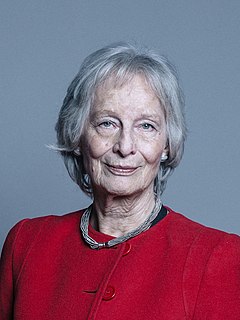Related Research Articles
The Commission for Racial Equality (CRE) was a non-departmental public body in the United Kingdom which aimed to address racial discrimination and promote racial equality. The commission was established in 1976, and disbanded in 2007 when its functions were taken over by the newly created Equality and Human Rights Commission.

Koowarta v Bjelke-Petersen, was a significant court case decided in the High Court of Australia on 11 May 1982. It concerned the constitutional validity of parts of the Racial Discrimination Act 1975, and the discriminatory acts of the Government of Queensland in blocking the purchase of land by Aboriginal people in northern Queensland.
The Scarman report was commissioned by the UK Government following the 1981 Brixton riots. Lord Scarman was appointed by then Home Secretary William Whitelaw on 14 April 1981 to hold the enquiry into the riots. The Scarman report was published on 25 November 1981.

The Equality and Human Rights Commission (EHRC) is a non-departmental public body in England and Wales, established by the Equality Act 2006 with effect from 1 October 2007. The Commission has responsibility for the promotion and enforcement of equality and non-discrimination laws in England, Scotland and Wales. It took over the responsibilities of the Commission for Racial Equality, the Equal Opportunities Commission and the Disability Rights Commission. The EHRC also has responsibility for other aspects of equality law: age, sexual orientation and religion or belief. A national human rights institution, it seeks to promote and protect human rights in England and Wales.

Herman George Ouseley, Baron Ouseley is a British parliamentarian, who has run public authorities, including local councils and is an adviser and reviewer of public services organisations. Lord Ouseley has expertise in equality and diversity issues and is the Chairperson of several charitable organisations as well as being a Patron for dozens of organisations. He has been at the forefront of challenging institutional racism in organisations and is an advocate on behalf of individuals from disadvantaged and deprived backgrounds.

The Race Relations Act 1976 was established by the Parliament of the United Kingdom to prevent discrimination on the grounds of race. The scope of the legislation included discrimination on the grounds of race, colour, nationality, ethnic and national origin in the fields of employment, the provision of goods and services, education and public functions.

Mandla v Dowell-Lee [1982] UKHL 7 is a United Kingdom law case on racial discrimination. It held that Sikhs are to be considered an ethnic group for the purposes of the Race Relations Act 1976.
Equality and diversity is a term used in the United Kingdom to define and champion equality, diversity and human rights as defining values of society. It promotes equality of opportunity for all, giving every individual the chance to achieve their potential, free from prejudice and discrimination.

Janet Alison Whitaker, Baroness Whitaker is a British politician with the Labour Party.
The hate speech laws in Australia give redress to someone who is the victim of discrimination, vilification, or injury on grounds that differ from one jurisdiction to another. All Australian jurisdictions give redress when a person is victimised on account of colour, ethnicity, national origin, or race. Some jurisdictions give redress when a person is victimised on account of colour, ethnic origin, religion, disability, gender identity, HIV/AIDS status or sexual orientation.

The Race Relations Act 1965 was the first legislation in the United Kingdom to address racial discrimination.

Executive Order 11375, signed by President Lyndon B. Johnson on October 13, 1967, banned discrimination on the basis of sex in hiring and employment in both the United States federal workforce and on the part of government contractors.
Race relations is a sociological concept that emerged in Chicago in connection with the work of sociologist Robert E. Park and the Chicago race riot of 1919. Race relations designates a paradigm or field in sociology and a legal concept in the United Kingdom. As a sociological field, race relations attempts to explain how racial groups relate to each other, and in particular to give an explanation of violence connected to race.

Equinet is the European Network of Equality Bodies. It serves as a professional platform for cooperation, capacity building and peer support amongst equality bodies around the legal interpretation and implementation in practice of the EU equal treatment Directives and around the promotion of equality and the elimination of discrimination.
Farrukh Siyar Hashmi OBE FRCPsych was a consultant psychiatrist who contributed to the development of transcultural psychiatry and race relations legislation in post-war Britain.
Dipak K. Nandy is an Indian academic and administrator.

The Race Relations (Amendment) Act 2000 is an Act of the Parliament of the United Kingdom that modified the earlier Race Relations Act 1976.
Section 18C of the Racial Discrimination Act 1975, deals with offensive behaviour "because of race, colour or national or ethnic origin" in Australia. It is a section of the Racial Discrimination Act 1975, which was passed by the Australian Parliament during the term of the Whitlam Government and makes racial discrimination unlawful in Australia. Section 18C was added by the Keating Government in 1995. The Section has been controversial and subject to much debate.
Asquith Camile Xavier was a West Indian-born Briton who ended a colour bar at British Railways in London by fighting to become the first non-white train guard at Euston railway station in 1966. Trevor Phillips, when chairman of the Commission for Racial Equality, said in 2006: "Asquith's stand against discrimination brought to light the inadequacy of early race discrimination laws and persistent widespread discrimination faced by ethnic minorities." A plaque at the station commemorates his achievement.
References
- 1 2 "Discrimination and race relations policy". www.nationalarchives.gov.uk. The National Archives. Retrieved 29 June 2019.CS1 maint: discouraged parameter (link)
- ↑ "Race Relations Act 1965" (PDF). www.legislation.gov.uk. The National Archives. Retrieved 29 June 2019.CS1 maint: discouraged parameter (link)
- ↑ "On this day: 8 December 1965: New UK race law 'not tough enough'". BBC News. 1965. Retrieved 10 January 2010.CS1 maint: discouraged parameter (link)
- ↑ "Race Relations Board: Minutes and Papers". /discovery.nationalarchives. The National Archive. Retrieved 29 June 2019.CS1 maint: discouraged parameter (link)
- ↑ Carter, Mark Bonham (4 September 2016). "Measures Against Discrimination: The North American Scene". Race. 9: 1–26. doi:10.1177/030639686700900101.
- ↑ Lessons from the 1965 Race Relations Act (PDF). London: Runnymede. 2015. Retrieved 30 June 2019.CS1 maint: discouraged parameter (link)
- ↑ Sooben, Philip N. (1990). The Origins of the Race Relations Act (PDF). Coventry: Centre for Research in Ethnic Relations, University of Warwick. Retrieved 30 June 2019.CS1 maint: discouraged parameter (link)